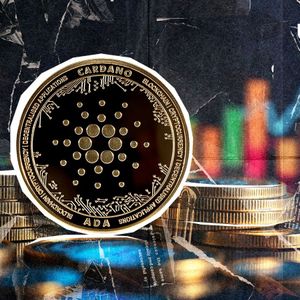Since the start of 2025, the circulating supply of stablecoins has grown tremendously, with the supply now sitting at approximately $211.2 billion, up from about $194.2 billion in supply at the start of this. In this relatively short time frame, there’s been a circulating supply growth of around $16.97 billion. In terms of how quickly that has happened, the increase has come in part from a surge of renewed interest in stablecoins—something that was far from a given after 2024’s events. While the exact driving forces behind this ongoing resurgence remain a mystery, we can get a clearer picture of what’s happening by examining the composition of circulation growth from a couple of different angles. Pacing the Growth: Fluctuations in the Rate of Increase By the end of 2024, stablecoins had been circulating at a rate of roughly $450 million per day for most of the November-December period. But coming into 2025, that growth slowed dramatically. In January, the daily increase dipped to around $400 million, indicating that the overall market had entered a stage of consolidation. This wasn’t just a crypto thing. The dip could be pinned down to several big-picture, macroeconomic forces. Risk sentiment across the board had shifted, and there was plenty of uncertainty around how stable regulatory frameworks for the stablecoin market were going to be. Despite the preceding downturn, by February 1, 2023, the stablecoin supply had eked out enough recession-bucking growth to display a monthly gain of $541 million. This was apparently not a one-time thing, as the stablecoin supply had a second-straight “up” day on February 2, pushing the total supply of these dollar-pegged, crypto-assets back above $180 billion. A calculation of the monthly change from January 1 to February 1 shows that despite the previous downturn in the stablecoin supply, some kind of centralized liquidity reservoir was built back up over the course of January. Momentum Shifts: A Positive Outlook for Liquidity Expansion The most notable sign of this resurgence could be seen in the middle of January. At this time, the 7-day moving average (7-day MA) of stablecoin circulation exceeded the 30-day simple moving average (30-day SMA), demonstrating a shift in short-term market dynamics. When these two moving averages cross, it’s often interpreted as a “bullish” signal in financial markets, indicating that demand has increased and that liquidity is entering the system. This upturn could denote that investors are once more embracing stablecoins as a reliable safeguard against market uncertainty and a readily accessible source of liquidity within the crypto space. Market participants who favor price stability are gravitating toward the following stablecoins: USDT, USDC, USDE, DAI, FDUSD, PYUSD, TUSD, and FRAX—with good reason. These cryptocurrencies promise to hold a value equivalent to that of a basket of fiat currencies. #Stablecoin circulating supply has increased by $16.97B since the start of 2025, rising from ~$194.2B to ~$211.2B. However, the pace of growth has varied, with a slowdown in early 2025 before picking up again in February. pic.twitter.com/Tda7t3fs8T — glassnode (@glassnode) February 11, 2025 The stablecoin market is growing, which is a trend worth noting because it is taking us toward a new era of digital assets. For a long time, we have considered stablecoins to be the bridge between traditional finance and the decentralized world of cryptocurrencies. The respectability that they maintain in the marketplace stems from their 1:1 backing with fiat currency. This peg is supposed to remain intact even when the world of Bitcoin and Ether is in a state of turmoil. So, when the price of Bitcoin is slumping or soaring, the price of a stablecoin, like the USDC issued by Circle, is supposed to remain at or near $1. Looking Ahead: The Future of Stablecoins With the pace of stablecoin growth that we have seen so far this year, it is likely that we will continue to see this growth—a rebound from the stablecoin slowdown of 2022—that is not slowed down by (potentially negative) regulatory news. What is clear is that an increasingly imminent regulatory environment is a key factor influencing not just the future of stablecoins but also stablecoin growth. Countries around the world are not just looking at cryptocurrency regulation broadly but are also paying specific attention to stablecoins. Concurrently, the competition in the stablecoin segment is intensifying—not just from long-established stablecoins like USDT and USDC but also from newer market entrants and DeFi protocols. The emergence of algorithmic stablecoins and CBDCs might one day change the landscape, but in the meantime, the market’s major players seem well positioned to hoover up an awful lot of liquidity. These challenges notwithstanding, stablecoins have established themselves as an asset class that one can count on. The current rebound in their supply growth is a testament to their enduring utility in the digital economy. One could argue that the current pace of growth is suspicious and will slow down again. If so, that would make the supply stability mentioned earlier all the more important. But if the current pace holds, it makes stablecoins that much more resilient and that much more a part of the digital landscape. Disclosure: This is not trading or investment advice. Always do your research before buying any cryptocurrency or investing in any service. Follow us on Twitter @nulltxnews to stay updated with the latest Crypto, NFT, AI, Cybersecurity, Distributed Computing, and Metaverse news ! Image Source: designsells/ 123RF // Image Effects by Colorcinch




















